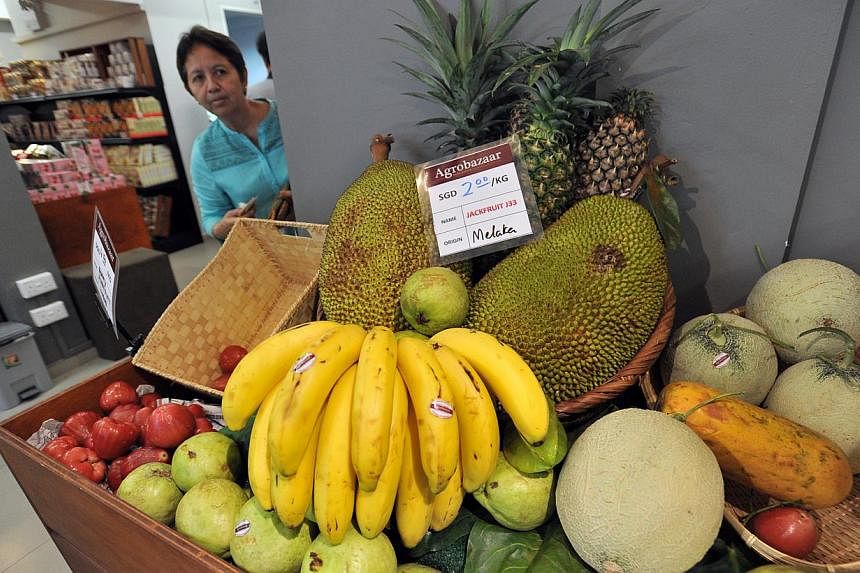Consumers in Singapore are snapping up more fruit from Malaysia, buying 6 per cent more every year for the last three years.
Last year, about 144,600 tonnes of fruit were imported from across the Causeway, accounting for 35 per cent of total fruit imports that year, figures from the Agri-Food and Veterinary Authority (AVA) show.
This made Malaysia the top source of fruit for Singapore. Other main sources include China, the Philippines, South Africa and the United States.
Singapore brings in about 50 types of fruit from Malaysia; the top five, in order of popularity, are watermelon, papaya, durian, banana and pineapple, AVA said.
Fans of Malaysian fruit say they tend to be fresher and taste better.
Fruit stall manager Woo Jin Shun, 50, said: "Our customers like Malaysian fruit because they are fresher. They also say they can taste a difference in the texture, especially the durians." About 60 per cent of the fruit at the Geylang stall, Wonderful Durian, where Mr Woo works, is from Malaysia.
It takes between three and eight hours for the fruit to get to Singapore from Malaysia, he said, depending on traffic conditions and how fast the suppliers can turn around orders.
Housewife Rosminah Said, 63, who was shopping at Agrobazaar Malaysia last week, said the texture of bananas from across the Causeway, for example, is better for cooking.
She uses the fruit to make pengat pisang, or banana stewed in coconut milk with palm sugar.
Officially opened last week by Prime Minister Lee Hsien Loong and his Malaysian counterpart Najib Razak, Agrobazaar Malaysia, located at Sultan Gate off Beach Road, stocks authentic Malaysian produce, including fruit and groceries. It also has a cafe and rooftop restaurant.
Agrobazaar's assistant manager Anisah Amin said the 20 types of fruit it sells are sourced directly from farms in Malaysia and delivered to the store every two days to ensure freshness.
The bazaar serves as another source of Malaysian fruit for Singapore consumers. Retiree Chung Chee Keong, 85, who paid $29 for a D24 durian at the store, said: "It's the real deal here; no need to be afraid of getting cheated."
The taste test
FANS of Malaysian fruit say it tastes better. To find out if that is the case, The Straits Times invited three experts for a blind taste test of bananas and pineapples - popular among Singapore consumers.
Food consultant Violet Oon and this newspaper's food critics Tan Hsueh Yun and Wong Ah Yoke also sampled bananas and pineapples from the Philippines for comparison.
Their verdict? Bananas from Malaysia do taste better than those from the Philippines. The same, however, cannot be said for Malaysian pineapples - those from the Philippines were more delicious.
The Malaysian bananas were "creamy and sweet", said Ms Tan. Philippine bananas had "no trace of sweetness" and they "tasted very tangy".
Ms Oon said the Philippine bananas were plucked when they were still very raw. "Those that can travel well and do not rot easily were chosen to make the trip here."
The trio liked the Philippine pineapples. The fruit tasted slightly fermented but was "sweet and much juicier", said Mr Wong.
Ms Tan added: "It had a gorgeous honey flavour. I would use it for cooking grilled fish or to make salsa. It did not cause that biting sensation on the tongue."
Malaysian pineapples were "juicy, but not juicy enough", said Ms Tan.
CHERYL FAITH WEE

